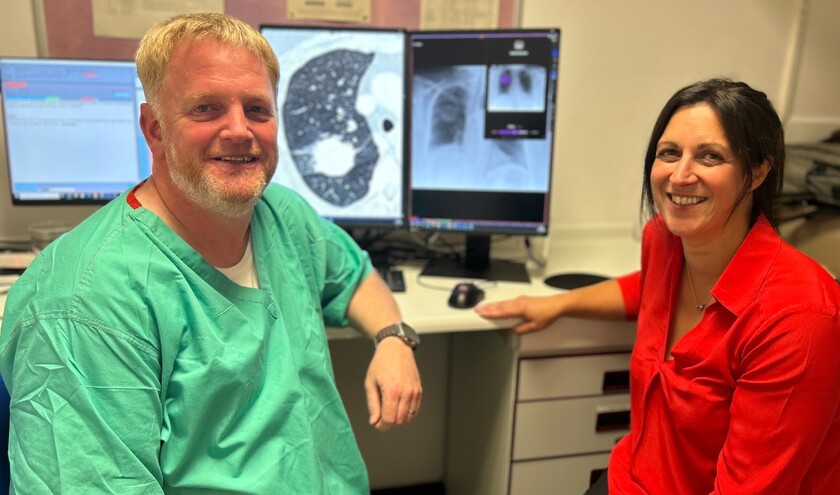The health board is working alongside the Accelerated National Innovation Adoption (ANIA) Pathway team on this potentially transformative work. Diagnostic care for lung cancer has improved across Grampian thanks to the use of AI technology that scans x-ray images for more than 120 potential issues, and the team is building on these results to inform the roll-out of AI in other areas.
All chest x-ray images continue to be manually assessed by radiologists, but the use of Annalise CXR software highlights images that may show signs of lung cancer, so that they can be reviewed more urgently.
Consultant radiologist, Dr Struan Wilkie, said: ‘The number of referrals for urgent suspected cancer has increased by about 50% in the last five years across Grampian, across all specialties. While the number of confirmed cases remains relatively stable, this means there's huge demand for diagnostic radiology services and our teams are using the latest innovations, tools and expertise to ensure patients are treated as quickly as possible. We see about 300 chest x-rays per day in Grampian alone and thousands across the country so using the same tech and lessons learned elsewhere has huge potential benefits for both patients and staff.
‘As healthcare continues to become ever more specialised, as treatments and technologies evolve, so do the demands on staff. Used in the right way, AI can give us a helping hand but it can't manage risk or take responsibility for patients, so there will always be a need for checks.'
The software was first introduced across 13 sites as part of NHS Grampian Innovation Hub's GRACE Project in 2022, to evaluate the use of AI in radiology departments. It was the first time the Annalise CXR AI algorithm had been used by a UK health board, and continues to be a huge success.
Struan added: ‘Through the GRACE Project, we're finding 12% more treatable cancers – which means we're catching them earlier – and getting 95% of people through to treatment is taking us 30 days less.'
Health secretary, Neil Gray, said: 'The Scottish Government is clear that embracing innovation is absolutely vital as we seek to address current pressures and meet the challenges of the future. Artificial Intelligence is a key part of that, so I warmly welcome NHS Grampian's adoption of this new tool which supports our ambitions for reducing cancer waiting times and improving outcomes. I look forward to seeing how we can learn lessons for the wider health service.'
The team is also exploring the potential of Annalise CXR software to draft reports when it analyses images it does not find any abnormalities in.
Dr Wilkie added: ‘This AI tech is really good at identifying when someone's x-rays are normal so the auto-drafting of some reports has huge potential too. This means we could more quickly review images for examinations with normal findings, giving us more time to spend reviewing the abnormal x-rays, which reduces the time a patient could wait for a report.'
Lorna Cameron, programme manager for innovation at NHS Grampian, added: 'It has been fantastic to see our lung cancer diagnostics pathway improving, and now to be realising the potential this technology has to help us with major challenges like the increasing volume of referrals across Scotland.'



